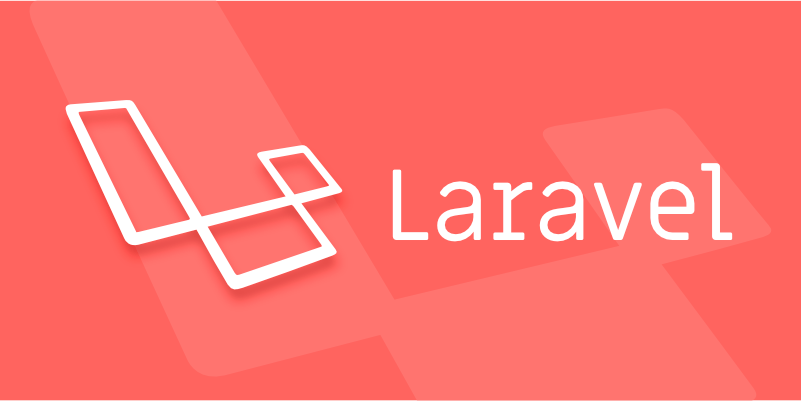Redis is an effective caching solution in Laravel because it offers low-latency data access, supports multiple data types, and integrates seamlessly via Laravel’s Cache facade. 1) Install predis/predis or use the PHP Redis extension. 2) Update the .env file to configure Redis as the cache driver. 3) Use Cache::put(), Cache::get(), and Cache::forget() for basic caching. 4) Leverage Cache::remember() to cache query results with TTL. 5) Utilize tags to group and invalidate related cache items together. Proper key naming and expiration settings are crucial for optimal performance.

Caching is one of the most effective ways to speed up your Laravel application, and Redis is a powerful tool that makes it easy to handle. If you're looking to improve performance without rewriting large parts of your app, integrating Redis as a cache driver in Laravel is a solid move.

Why Use Redis for Caching in Laravel?
Redis stands out because it's fast, supports multiple data types, and can be used both as a cache and a full-fledged database. In Laravel, using Redis as a cache backend gives you:
- Low-latency data access
- Built-in support via Laravel’s Cache facade
- Easy switching between cache drivers
- Support for tags, TTL (Time to Live), and more
Laravel already provides an abstraction layer through its Cache component, so even if you switch back to another driver later, your code doesn’t need major changes.

Setting Up Redis in Laravel
Before diving into caching logic, make sure Redis is properly configured in your Laravel project. Here’s how to do it step by step:
-
Install predis/predis or use PHP’s Redis extension:
composer require predis/predis
- Update
.envto use Redis:CACHE_DRIVER=redis REDIS_HOST=127.0.0.1 REDIS_PASSWORD=null REDIS_PORT=6379
That’s basically all it takes to get Laravel talking to Redis. You can test it quickly using Cache::put() and Cache::get() in a controller or Tinker session.

Basic Usage: Storing and Retrieving Cached Data
Once Redis is connected, using it with Laravel’s Cache facade feels natural. The syntax is clean and consistent across different drivers.
Here’s a common example—caching the result of a database query:
$users = Cache::remember('users.all', 60, function () {
return User::all();
});This tries to fetch the key users.all from Redis. If it's not there, it runs the closure, stores the result for 60 seconds, and returns it. That way, repeated requests within that time won’t hit the database.
You can also manually put and forget values:
Cache::put('key', 'value', $seconds)Cache::get('key')Cache::forget('key')
These methods are especially useful when you want fine control over when things are cached or cleared.
When to Use Tags and How They Help
One thing that sets Redis apart from simpler drivers like file or array is its support for cache tagging. This allows you to group related items and clear them together.
For example:
Cache::tags(['users'])->put('user.1.profile', $profileData, 30);
Cache::tags(['users'])->flush();This is super handy when invalidating caches after updates. Just remember that not all cache drivers support tags, so stick with Redis or database driver if you need this feature.
And that’s pretty much it. Laravel abstracts away most of the complexity, and Redis does the heavy lifting under the hood. It's straightforward once set up, but don't overlook the importance of choosing the right keys and expiration times—it makes a real difference in performance.
The above is the detailed content of Implementing Caching using Redis with Laravel.. For more information, please follow other related articles on the PHP Chinese website!

Hot AI Tools

Undress AI Tool
Undress images for free

Undresser.AI Undress
AI-powered app for creating realistic nude photos

AI Clothes Remover
Online AI tool for removing clothes from photos.

Clothoff.io
AI clothes remover

Video Face Swap
Swap faces in any video effortlessly with our completely free AI face swap tool!

Hot Article

Hot Tools

Notepad++7.3.1
Easy-to-use and free code editor

SublimeText3 Chinese version
Chinese version, very easy to use

Zend Studio 13.0.1
Powerful PHP integrated development environment

Dreamweaver CS6
Visual web development tools

SublimeText3 Mac version
God-level code editing software (SublimeText3)

Hot Topics
 Creating Custom Validation Rules in a Laravel Project
Jul 04, 2025 am 01:03 AM
Creating Custom Validation Rules in a Laravel Project
Jul 04, 2025 am 01:03 AM
There are three ways to add custom validation rules in Laravel: using closures, Rule classes, and form requests. 1. Use closures to be suitable for lightweight verification, such as preventing the user name "admin"; 2. Create Rule classes (such as ValidUsernameRule) to make complex logic clearer and maintainable; 3. Integrate multiple rules in form requests and centrally manage verification logic. At the same time, you can set prompts through custom messages methods or incoming error message arrays to improve flexibility and maintainability.
 Working with pivot tables in Laravel Many-to-Many relationships
Jul 07, 2025 am 01:06 AM
Working with pivot tables in Laravel Many-to-Many relationships
Jul 07, 2025 am 01:06 AM
ToworkeffectivelywithpivottablesinLaravel,firstaccesspivotdatausingwithPivot()orwithTimestamps(),thenupdateentrieswithupdateExistingPivot(),managerelationshipsviadetach()andsync(),andusecustompivotmodelswhenneeded.1.UsewithPivot()toincludespecificcol
 Sending different types of notifications with Laravel
Jul 06, 2025 am 12:52 AM
Sending different types of notifications with Laravel
Jul 06, 2025 am 12:52 AM
Laravelprovidesacleanandflexiblewaytosendnotificationsviamultiplechannelslikeemail,SMS,in-appalerts,andpushnotifications.Youdefinenotificationchannelsinthevia()methodofanotificationclass,andimplementspecificmethodsliketoMail(),toDatabase(),ortoVonage
 Understanding Dependency Injection in Laravel?
Jul 05, 2025 am 02:01 AM
Understanding Dependency Injection in Laravel?
Jul 05, 2025 am 02:01 AM
Dependency injection automatically handles class dependencies through service containers in Laravel without manual new objects. Its core is constructor injection and method injection, such as automatically passing in the Request instance in the controller. Laravel parses dependencies through type prompts and recursively creates the required objects. The binding interface and implementation can be used by the service provider to use the bind method, or singleton to bind a singleton. When using it, you need to ensure type prompts, avoid constructor complications, use context bindings with caution, and understand automatic parsing rules. Mastering these can improve code flexibility and maintenance.
 Strategies for optimizing Laravel application performance
Jul 09, 2025 am 03:00 AM
Strategies for optimizing Laravel application performance
Jul 09, 2025 am 03:00 AM
Laravel performance optimization can improve application efficiency through four core directions. 1. Use the cache mechanism to reduce duplicate queries, store infrequently changing data through Cache::remember() and other methods to reduce database access frequency; 2. Optimize database from the model to query statements, avoid N 1 queries, specifying field queries, adding indexes, paging processing and reading and writing separation, and reduce bottlenecks; 3. Use time-consuming operations such as email sending and file exporting to queue asynchronous processing, use Supervisor to manage workers and set up retry mechanisms; 4. Use middleware and service providers reasonably to avoid complex logic and unnecessary initialization code, and delay loading of services to improve startup efficiency.
 Managing database state for testing in Laravel
Jul 13, 2025 am 03:08 AM
Managing database state for testing in Laravel
Jul 13, 2025 am 03:08 AM
Methods to manage database state in Laravel tests include using RefreshDatabase, selective seeding of data, careful use of transactions, and manual cleaning if necessary. 1. Use RefreshDatabasetrait to automatically migrate the database structure to ensure that each test is based on a clean database; 2. Use specific seeds to fill the necessary data and generate dynamic data in combination with the model factory; 3. Use DatabaseTransactionstrait to roll back the test changes, but pay attention to its limitations; 4. Manually truncate the table or reseed the database when it cannot be automatically cleaned. These methods are flexibly selected according to the type of test and environment to ensure the reliability and efficiency of the test.
 Choosing between Laravel Sanctum and Passport for API authentication
Jul 14, 2025 am 02:35 AM
Choosing between Laravel Sanctum and Passport for API authentication
Jul 14, 2025 am 02:35 AM
LaravelSanctum is suitable for simple, lightweight API certifications such as SPA or mobile applications, while Passport is suitable for scenarios where full OAuth2 functionality is required. 1. Sanctum provides token-based authentication, suitable for first-party clients; 2. Passport supports complex processes such as authorization codes and client credentials, suitable for third-party developers to access; 3. Sanctum installation and configuration are simpler and maintenance costs are low; 4. Passport functions are comprehensive but configuration is complex, suitable for platforms that require fine permission control. When selecting, you should determine whether the OAuth2 feature is required based on the project requirements.
 Implementing Database Transactions in Laravel?
Jul 08, 2025 am 01:02 AM
Implementing Database Transactions in Laravel?
Jul 08, 2025 am 01:02 AM
Laravel simplifies database transaction processing with built-in support. 1. Use the DB::transaction() method to automatically commit or rollback operations to ensure data integrity; 2. Support nested transactions and implement them through savepoints, but it is usually recommended to use a single transaction wrapper to avoid complexity; 3. Provide manual control methods such as beginTransaction(), commit() and rollBack(), suitable for scenarios that require more flexible processing; 4. Best practices include keeping transactions short, only using them when necessary, testing failures, and recording rollback information. Rationally choosing transaction management methods can help improve application reliability and performance.






